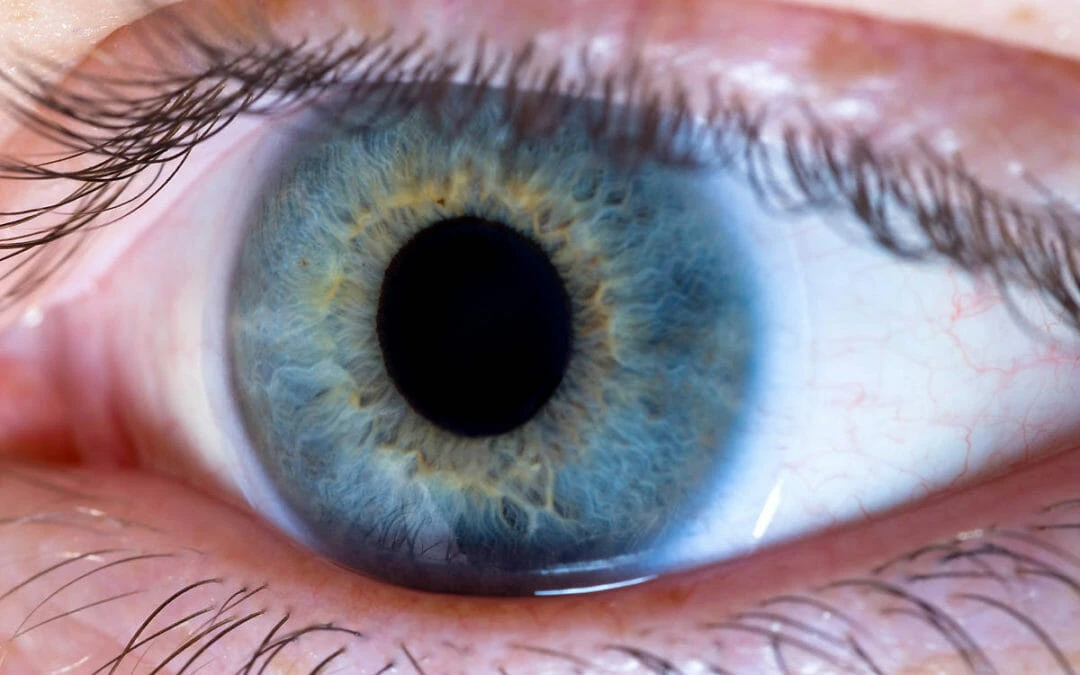Eyelash mites occur from two kinds of Demodex mites.
It feeds off skin cells. Itchy, red eyes and burning on the lashes may also occur.
Eye health is important to keep an eye on the mites.
What are eyelash mites?
They occur naturally on hair follicles and feed on dead skin cells on your body. Most people have a small amount of Demodex on their skin and don’t know it. People with both good and poor hygiene have mites on their skin, as they are a naturally occurring organism.
Demodex mites may result from an over-population of microscopic mites living inside the eyelash follicles – known as Demodex, these bugs are also associated with the skin condition rosacea
All they want is to eat some dead skin cells and a bit of the oil that comes along with them.
The bugs burrow into our hair follicles, where they feast on dead skin cells and sebum.
At night, they crawl out to mate and lay their eggs.
Eyelashes are often swollen by micro-mite infections. They occur naturally in hair follicles feeding on dead skin tissue.
Demodex is very commonly used in people’s skin but not always known for it. People who do not maintain good or poor hygiene get Mites on the skin.
Research shows that almost half of people aged 70 and older have Demodex mites. Depending upon the concentration, the Demodex mites have potential health benefits.
There are 2 types of Demodex mites:
Demodex folliculorum and Demodex brevis .
Both types can be found all over the face, but Demodex folliculorum mites tend to concentrate around the eyelash area.
The mites come out of the hair follicle at night to mate and then return in the morning. For this reason, symptoms of a Demodex infestation may be worse in the morning.
Demodex mites live inside hair follicles, where they feed on dead skin cells and oily sebum that is secreted onto the hair shaft. That’s why they’re found in higher numbers around greasier areas of the body, like the eyes and nose.
Does everyone have eyelash mites?
Eyelashes mites generally do not cause harm, however, they can be useful for the skin.
Often they will cause an infection or inflammation in your eyes that will require treatment before your vision will change. Eyelash mites are naturally present in the face, which is not a particular cause for them either.
However, a bacterial infestation is credited with various health issues ranging from skin inflammation to rosacea, eczema.
Because eyelashes are microscopy it is not possible to spot the mite but can tell the signs that they cause them.
Demodex mites occur frequently.
It has been speculated that everybody could get one. Even though babies are not born with mites, the parents gain them by interacting directly in their mothers household.
Demodex Mites are prevalent in facial areas, such as foreheads behind the ears lashes and cheekbones. Demodex mites begin to increase in the teenager age when the glands of the eyelids increase production.
In fact, the researchers estimate over 90% of us carry Demodex mites. During age 68, everyone can have up to 11,000 mites.
Are eyelash mites dangerous?
Eyelash mites have been shown to cause blepharitis. It is usually associated with irritation on the eyelids.
Blepharitis is caused in several ways including eyelash mite infestations. Known as the Demodex folliculorum mite, the mite causes problems with blepharism and eyelash damage. These species can cause anterior blepharitis, or inflammation around the eyes where lashes are placed.
Blepharitis is rarely contagious but can be dangerous, says AOA. Large infestations are possible for those who contact and contract mites.
Tell me the best way to avoid eyelash mites?
Severe lash mite infestations may occur, so you must be very careful when acquiring eyelashes mites. If you are having a serious eyelash mite problem, consult with a doctor.
There is a chance you may also get eyelid mites. These eyelid mites can cause significant irritation and discomfort, so seek immediate medical attention immediately. If treated in a rapid manner, eyelash mites are easily treatable and do not affect eyelids.
Symptoms of Eyelash Mite Infestation
Too many Demodex mites can cause uncomfortable symptoms that may include: Itchy or burning eyes, especially in the morning
- Swollen eyelids
- Crusty eyes
- Red, irritated eyes
- Watery eyes
- Blurred or decreased vision
- Falling eyelashes
- Infected eyes
In a rare condition, eyelash mites can make your vision difficult and interfere with glare.
Treating symptomatic issues early is the quickest and simplest way of limiting their development.
In general eyelash mite symptoms can range from mild irritation to severe irritation. Demodex mites can temporarily worsen skin conditions. The need for medical attention in these more complicated cases must be taken seriously.
How do eyelash mites cause symptoms?
Demodex mites can sometimes overpopulate, causing disease and causing symptoms. This can happen if immune cells weaken – through other disease / medication. Demodex mites can affect your immune system in a small way and cause inflammation which blocks the glands in your eyelids. Moreover, bacteria living within a mite can stimulate an immune response and cause inflammation.
Tell me the symptoms of eyelash mites?
Symptoms of lash mite infestations include irritated eyes. Blepharitis is a chronic condition that sometimes has other symptoms such as corneal infection or keratitis, which causes inflammation or damage. Eyelash infections can cause pink eye which causes irritated white eyes. Sometimes lashes grow outward and cause an irritating reaction referred to as trichiasis.
Causes of eyelash mites
Demodex mites usually appear on facial surfaces and are easily transmitted through contact. These insects are usually harmless and they are generally free from toxins and contaminates and lay eggs on the surface of the sebaceous gland duct. Although mite populations are generally controlled by immune systems they can sometimes overproliferate when alterations are made to micro-organisms in their eyelid skin cells. In some cases, increasing numbers of microbial populations and the increase in the accumulation of egg and larva may induce inflammation that causes blockage and inflammation in the sebaceous glands.
Other potential causes for eyelash mite outbreaks include other skin conditions, such as dermatitis , inflammatory acne , and alopecia . Skin infections, weakened immune systems, and HIV are also linked to Demodex mites.
You’re more likely to have too many eyelash mites if you’re an older adult or are a caregiver for one, or if your immune system doesn’t work well due to a health problem or medication .
By age 70 , every individual has at least 1000-2000 mites. Men are almost twice as likely to experience demodicosis, perhaps because women regularly cleanse their eyelids with eye makeup remover.
Diagnosis of eyelash mites
Ophthalmologists are trained to diagnose slits in the eye and to magnify the structure around the eye and eyelid. Cylindrical dandruff on eyelashes are classic signs of Demodex infection. In some cases doctors may also ask to have eyelashes removed to be examined under microscopes. Fluorescence dyes are useful for detecting larva and adult mites from Demodex eggs as well as adult mites.
Demodicosis can sometimes be missed at the first assessment due to its similarity with other eye problems like conjunctivitis, infectious keratitis and dry eye.
Tell me the best way to diagnose eyelash mites?
Your lash mite physician can diagnose eyelashes with questions about your condition and provide an eye exam. Your doctor is looking for redness around your lids. He will look at your eyes with the light from an angled lamp. Your physician will be able to see tiny tubes on your eyes. The lash is essentially waxy dry debris. It’s likely that Demodex mites have invaded the area. Often the doctors may even examine some eyebrows to see Demodex mites.
Treatment methods for Eyelash Mites
Treatment of Demodex – Mite is aimed at reducing the number and preventing repeat infestation. Treatments can contain either oral or topical drugs, taken alone or combined.
The first line of treatment for ocular Demodex is usually an over-the-counter topical medicine with a low concentration of tea tree oil or hypochlorous-based acid.
Tea tree oil may be another option for treating Demodex mites in the eyelash area.
The treatment for the eyelash mite infection is to remove the crust from your eyes. In cases where eyelash mite infestation is severe, or where bacteria is present, it can require surgical intervention. AOA advises soaking eyelids in warm water as the most effective way to treat eyelash mites.
Tea tree oil has antimicrobial, antifungal, antiviral, antiseptic, and acaricidal properties that work against the bugs
Tea tree oil: Soaked into wipes or cleansers, rub this over your closed eyelids and face. Don’t open your eyes quickly after wiping or they may sting. Make sure you are diluting the oil if it is full strength, as that will be too strong and harmful for your thin eyelid skin.
Some research Trusted Source has shown that tea tree oil can eradicate eyelash mites and reduce eye surface inflammation.
New Drug
An FDA-Approved Treatment on the Horizon A new drug in Phase 3 clinical trials might soon become the first FDA-approved treatment for Demodex blepharitis. TP-03 by Tarsus Pharmaceuticals works by paralyzing the nervous system of the mites.
Treatment Timeline for eyelash mites
Eyelash mite treatment is effective at eliminating infestations in several days to weeks. However, chronic diseases have a harder time in preventing or destroying them. Some symptoms disappear within a day and then return weeks later. The most effective treatment options are offered to these patients.
Coping with eyelash mites
Keep your eyes clean. Twice a day, wet a washcloth with warm water and baby shampoo or a lid scrub solution.
Other medications may be helpful to treat demodicosis symptoms. For example, avoid oily cleansing products and greasy eye makeup, this could cause excessive growth of Demodex.
Eyelash mite infestations can usually be cleared up easily. They can recur though, often within a year of stopping treatment
The best eyelash mites treatment from TheraLIfe.
References
Demodex blepharitis: Clinical perspectives. https://www.ncbi.nlm.nih.gov/pmc/articles/PMC6118860/ Liang, L., et al . (2010)
Human Demodex Mite: The Versatile Mite of Dermatological Importance. (https://www.ncbi.nlm.nih.gov/pmc/articles/PMC3884930/





